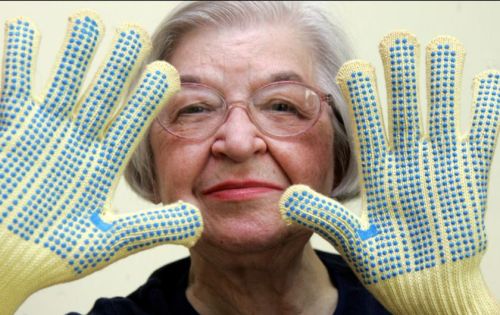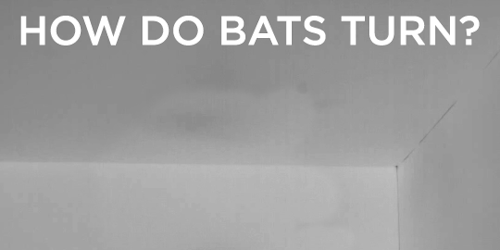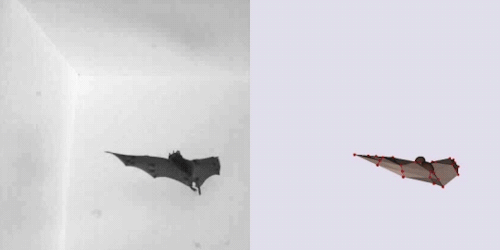Astronomers Have A New Tool In The Search For Habitable Exoplanets

Astronomers Have a New Tool in the Search For Habitable Exoplanets
The quest for habitable alien worlds may get a whole lot easier. http://futurism.com/astronomers-have-a-new-tool-in-the-search-for-habitable-exoplanets/
More Posts from Curiositytherover and Others


Stephanie Kwolek, the inventor of Kevlar, passed away this week at age 90
“A true pioneer for women in science,” passed away on Wednesday, reported the New York Times. As a DuPont scientist, Stephanie Kwolek is credited for inventing Kevlar in 1964, a fiber that has radically improved police and military body armor since its creation.
Kwolek died at age 90 in hospice care at St. Francis Hospital in Wilmington, Del. She leaves behind a legacy of achievement in science and technology that directly saved an estimated 3,000 lives of police officers over the past four decades.
Read more | Follow micdotcom










From Pluto to food grown in space, NASA is having a great year. But even more mysterious than those discoveries, a spacecraft found two eerily bright lights on a distant dwarf planet.

Lunokhod 1, first robotic rover to visit another world, landed on the moon 45 yrs ago today.

Before US astronaut Scott Kelly returned from his year-long mission aboard the International Space Station, he shared photos of his very last sunrise in space.
I think you need to see the full photos, in all their glory:












Source

Changing Moods with Sleep and Light
Pregnant with her first child, Monica Bryan noticed changes in her mood and energy levels. That’s when she heard about a UC San Diego School of Medicine clinical study aimed at using sleep and light therapies instead of medication to treat premenstrual, pregnancy, postpartum and menopausal depression.
Barbara Parry, MD, professor of psychiatry at UC San Diego School of Medicine, says the mood changes a woman undergoes before menstruation and during pregnancy, postpartum and menopause may result from the effect of a hormonal change on circadian rhythms. These circadian rhythm changes are akin to what occurs in jet lag when sleep and hormonal changes become “out of synch” with each other.
“The circadian rhythms of people who suffer from depression are off balance,” said Parry. “In women who develop depression during pregnancy, for example, melatonin, the hormone that anticipates the arrival of nighttime, is secreted earlier, and sleep onset occurs later, affecting the perceived quality of sleep.”
These disturbances in the body’s circadian rhythms can be triggered by changes in reproductive hormones that occur during the menstrual cycle, the peripartum period and menopause, resulting in an increased vulnerability to mood disorders. The noninvasive trial uses sleep and light therapy as a way to correct these biological rhythm disturbances, and thereby, improve mood. The trial is open to women with and without depressive symptoms related to the reproductive cycle, and compensation is available.
For two weeks, Bryan completed daily and weekly mood ratings and weekly clinic visits as part of the evaluation period. This study phase was followed by monitoring of her melatonin levels at home. Her activity levels were recorded via a wrist-mounted fitness band that measures activity and light exposure to assess the relationship between melatonin and activity and rest cycles.
After all baseline information was gathered, Bryan began the one-week intervention phase, which included one night of altered and shortened sleep cycle followed by light therapy. During this time the fitness band continued to record sleep, activity and light exposure.
Participation in the trial didn’t require much effort, said Bryan. She kept a daily log of her mood ratings and how much time she spent indoors and outdoors. Beyond that, the only added requirement was spending one hour after waking sitting in front of a light box.
“I spent the hour watching television, reading or catching up on what I missed the day before on my phone,” said Bryan. “There was no problem taking a little bit of time for myself in the mornings.”
Read more here For more information about the sleep and light therapy clinical trials, please call 619-543-7393



A new study (published in PLOS Biology) investigated how bats make sharp turns in the air, particularly when they have to grab the ceiling. It turns out aerodynamics have very little to do with it - it’s all about inertia. Just as a figure skater clutches his arms to his chest to increase his speed, bats pull in their wings to help them make turns.
You can read all about it (and see more video) in this piece by my friend Nsikan Akpan over at PBS Newshour.






A Salute to Sistas in Space
(From top to bottom and the order in which they went into space)
Dr. Mae C. Jemison
Stephanie D. Wilson
Joan Higginbotham
Dr. Yvonne Cagle
Jeanette J. Epps
Source: 5 Black Female Astronauts You Should Know

NASA Astronomy Picture of the Day 2016 September 4
Io over Jupiter from Voyager 1
Back in 1979, NASA’s Voyager 1 spacecraft flew past Jupiter and its moons. The images in this mosaic, featuring the moon Io against a background of gas giant Jupiter’s diffuse swirling cloud bands, were recorded by Voyager’s camera from a distance of about 8.3 million kilometers. The Io image from this mosaic may be the first to show curious round features on Io’s surface with dark centers and bright rims more than 60 kilometers across. Now known to be volcanic in origin, these features were then thought likely to be impact craters, commonly seen on rocky bodies throughout the Solar System. But as Voyager continued to approach Io, close-up pictures revealed a bizarre world devoid of impact craters, frequently resurfaced by volcanic activity. Earlier this year a new robotic spacecraft, NASA’s Juno, began to orbit Jupiter and last week made a pass within 5,000 kilometers of Jupiter’s clouds. During the next two years, it is hoped that Juno will discover new things about Jupiter, for example what’s in Jupiter’s core.

This Wristband Tells You Exactly What Vitamins You Need
-
 starsaremymuse reblogged this · 9 years ago
starsaremymuse reblogged this · 9 years ago -
 dimens1ons liked this · 9 years ago
dimens1ons liked this · 9 years ago -
 oneapplepiefromscratchplease reblogged this · 9 years ago
oneapplepiefromscratchplease reblogged this · 9 years ago -
 oneapplepiefromscratchplease liked this · 9 years ago
oneapplepiefromscratchplease liked this · 9 years ago -
 andysgra liked this · 9 years ago
andysgra liked this · 9 years ago -
 seanrmaddy reblogged this · 9 years ago
seanrmaddy reblogged this · 9 years ago -
 seanrmaddy liked this · 9 years ago
seanrmaddy liked this · 9 years ago -
 thoths-foundry-blog reblogged this · 9 years ago
thoths-foundry-blog reblogged this · 9 years ago -
 rodzilla-world reblogged this · 9 years ago
rodzilla-world reblogged this · 9 years ago -
 cmoore21033 liked this · 9 years ago
cmoore21033 liked this · 9 years ago -
 naderqot liked this · 9 years ago
naderqot liked this · 9 years ago -
 curiositytherover reblogged this · 9 years ago
curiositytherover reblogged this · 9 years ago -
 opnieuwroken-blog liked this · 9 years ago
opnieuwroken-blog liked this · 9 years ago -
 facil21374-blog liked this · 9 years ago
facil21374-blog liked this · 9 years ago -
 huisdieren-blog1 liked this · 9 years ago
huisdieren-blog1 liked this · 9 years ago -
 mckitterick liked this · 9 years ago
mckitterick liked this · 9 years ago -
 cyazure liked this · 9 years ago
cyazure liked this · 9 years ago -
 cumberbees reblogged this · 9 years ago
cumberbees reblogged this · 9 years ago -
 cumberbees liked this · 9 years ago
cumberbees liked this · 9 years ago -
 dannythedork18 reblogged this · 9 years ago
dannythedork18 reblogged this · 9 years ago -
 zetarays reblogged this · 9 years ago
zetarays reblogged this · 9 years ago -
 antaresdreams reblogged this · 9 years ago
antaresdreams reblogged this · 9 years ago -
 antaresdreams liked this · 9 years ago
antaresdreams liked this · 9 years ago -
 yuepants liked this · 9 years ago
yuepants liked this · 9 years ago -
 futurismnews reblogged this · 9 years ago
futurismnews reblogged this · 9 years ago